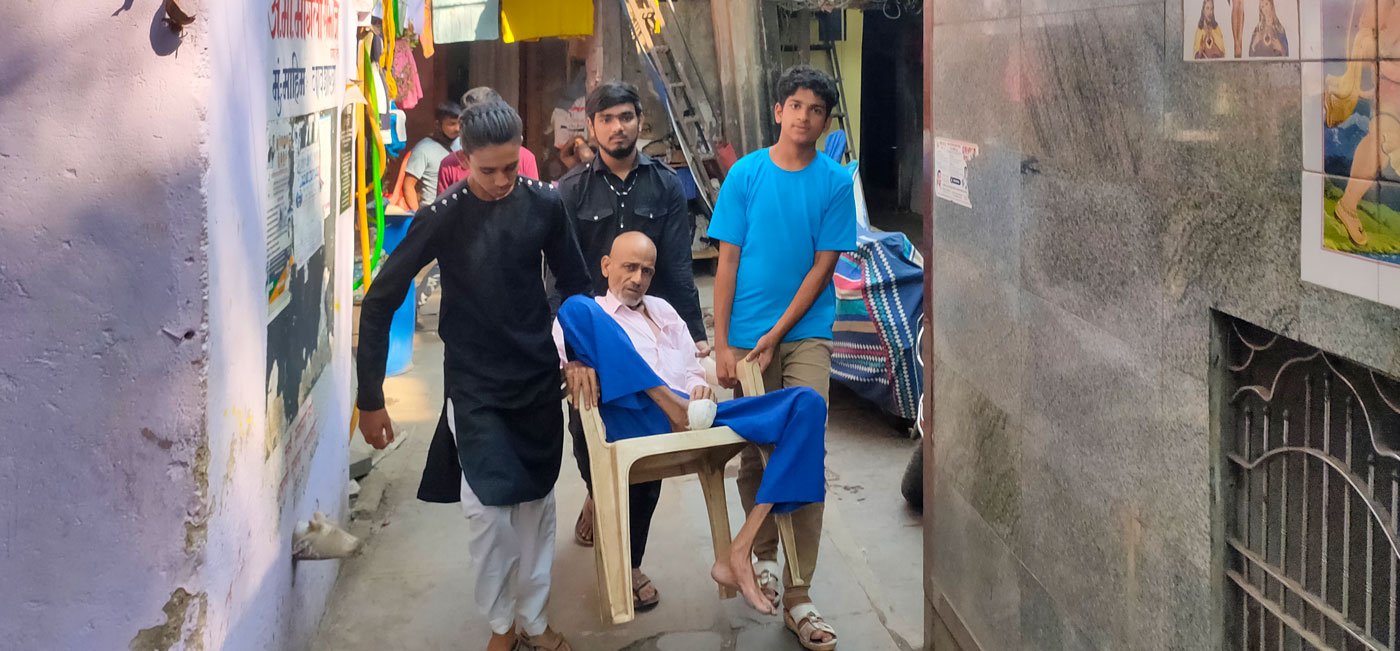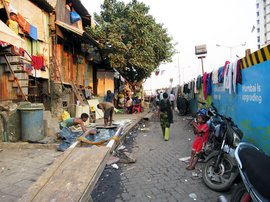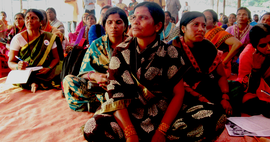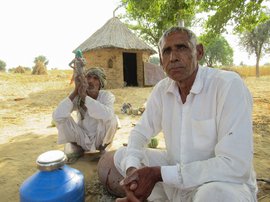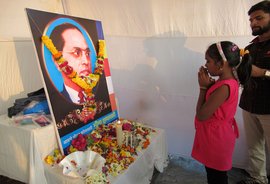Abdul Rahman’s world has shrunk – professionally, personally, physically. And quite literally. A migrant worker who once travelled across four continents, he is now confined to the 150 square feet room he lives in with five family members.
This Mumbai taxi driver – whose father came to the city decades ago from rural Tamil Nadu – has in the past driven bulldozers and cars in Saudi Arabia, and gone on work assignments to Dubai, Britain, Canada, Indonesia, Malaysia and parts of Africa. Today, he has to be physically carried in a chair, down a narrow lane in a Mahim slum colony, to a taxi that can take him to the hospital in Sion – over and over again.
When it’s time to go to the hospital, Rahman begins to prepare for the descent from his room. The ladder is just outside the door. He sits on the floor, his son holds his legs from below, a nephew or neighbour supports him from above. Rahman then painfully slides down, one step at a time, across nine steep rungs.
In the narrow lane below, he is helped onto an old paint-stained plastic chair – his right leg with the foot amputated resting on the seat. Then his son and two others carry the chair along the long and winding lane, and towards the road near Mahim bus depot. There, Rahman shuffles into a taxi.
The taxi fare to the state-run hospital in Sion, barely five kilometres away, is more than he can afford, and yet, for months last year, he had to go there every week to get his foot bandaged – and to address other problems arising out of acute diabetes and blocked circulation. When the wound healed a bit, the visits became less frequent, though every now and then the chair-borne procession still moves through that narrow lane, cramped rooms rising two-three levels on both sides in this colony off Mori Road in north Mumbai.
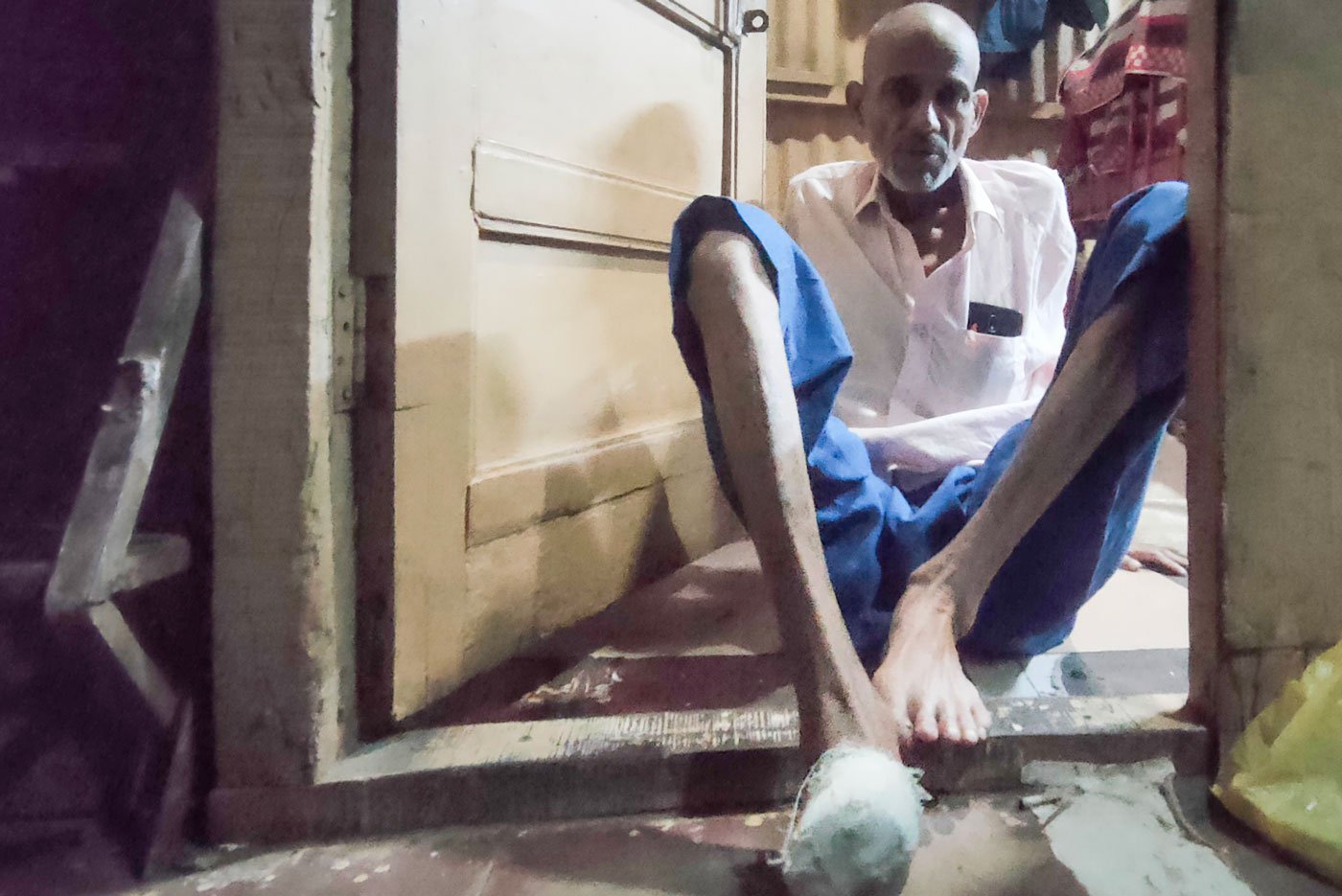
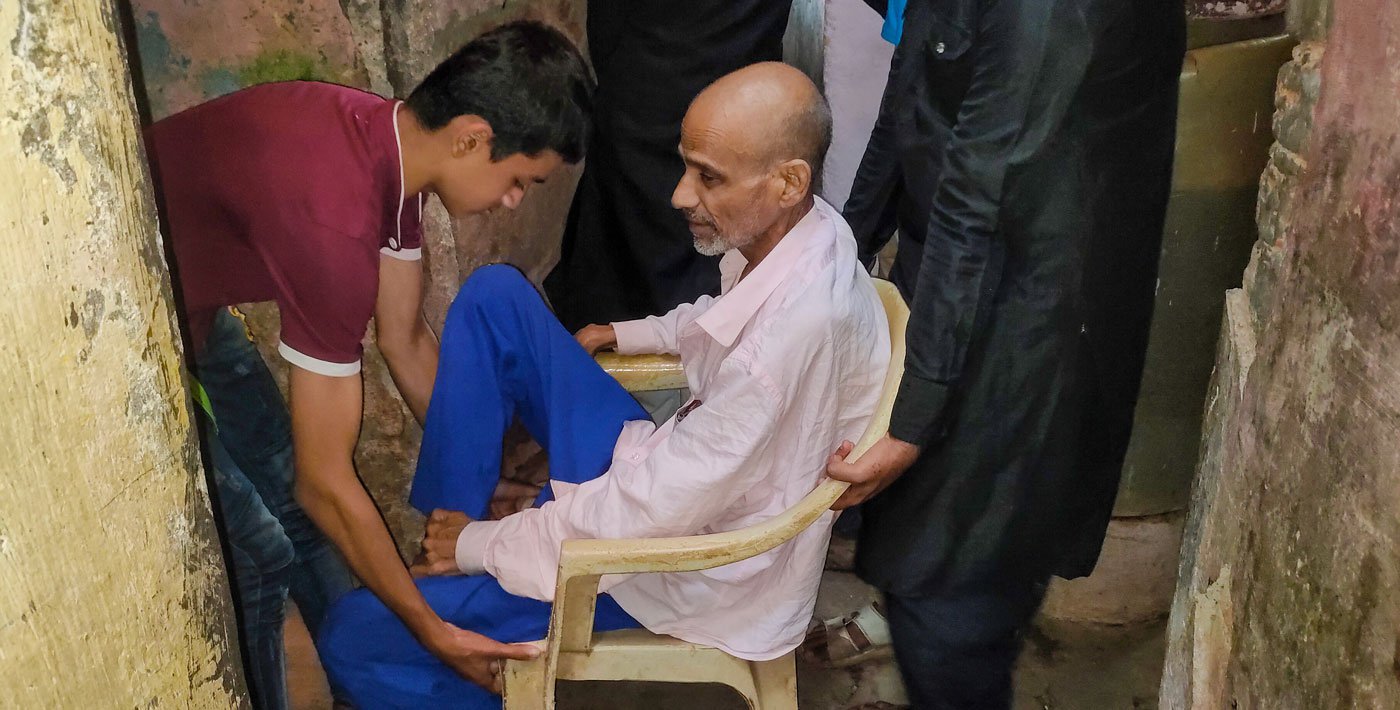
When it’s time to go to the hospital, Rahman begins to prepare for the descent from his room. In the narrow lane below, he is helped onto an old plastic chair
For years, Abdul Rahman Abdul Samad Shaikh would hurry down this lane every morning to his parked taxi and begin a 12-hour workday. With the lockdown that began in March 2020, he stopped plying the cab but would sometimes still go to familiar chai stalls to meet “ dost log ,” friends and colleagues. His diabetes was escalating, he kept feeling unwell, and could not resume work even when the lockdown eased. But he remained mobile.
Then he noticed a small black spot, “like a pen-point mark” on his toe. Rahman didn’t think too much about it when the doctor said it would be okay with a batch of antibiotics. “That didn’t help,” he says. The spot – on the right middle toe – kept steadily growing. “My foot began hurting very badly,” he says. “While walking it felt like there’s a needle or nail embedded in it.”
After several more visits to doctors, x-rays and tests, the darkened skin was excised. That too didn’t help. Within a month, in August 2021, the toe had to be cut off. A few weeks later, the adjacent toe was also removed. Severely blocked blood circulation, due to the diabetes, was taking a steady toll. By October last year, almost half of Rahman’s right foot was amputated. “ Pancho ungli uda diya [They chopped off all five toes],” he says, exhausted, sitting on a thin mattress kept on the floor in his room.
Since then, except frequent hospital visits, his world has shrunk to that small airless first-floor room. “ Bas, akela pada rehta hoon [I just keep lying down on my own],” he says. “I have no means to pass the time. We have a tv, but can’t afford to run it. I just keep thinking… I remember my friends, the things I bought for my children… but what will I do with remembering all this?”
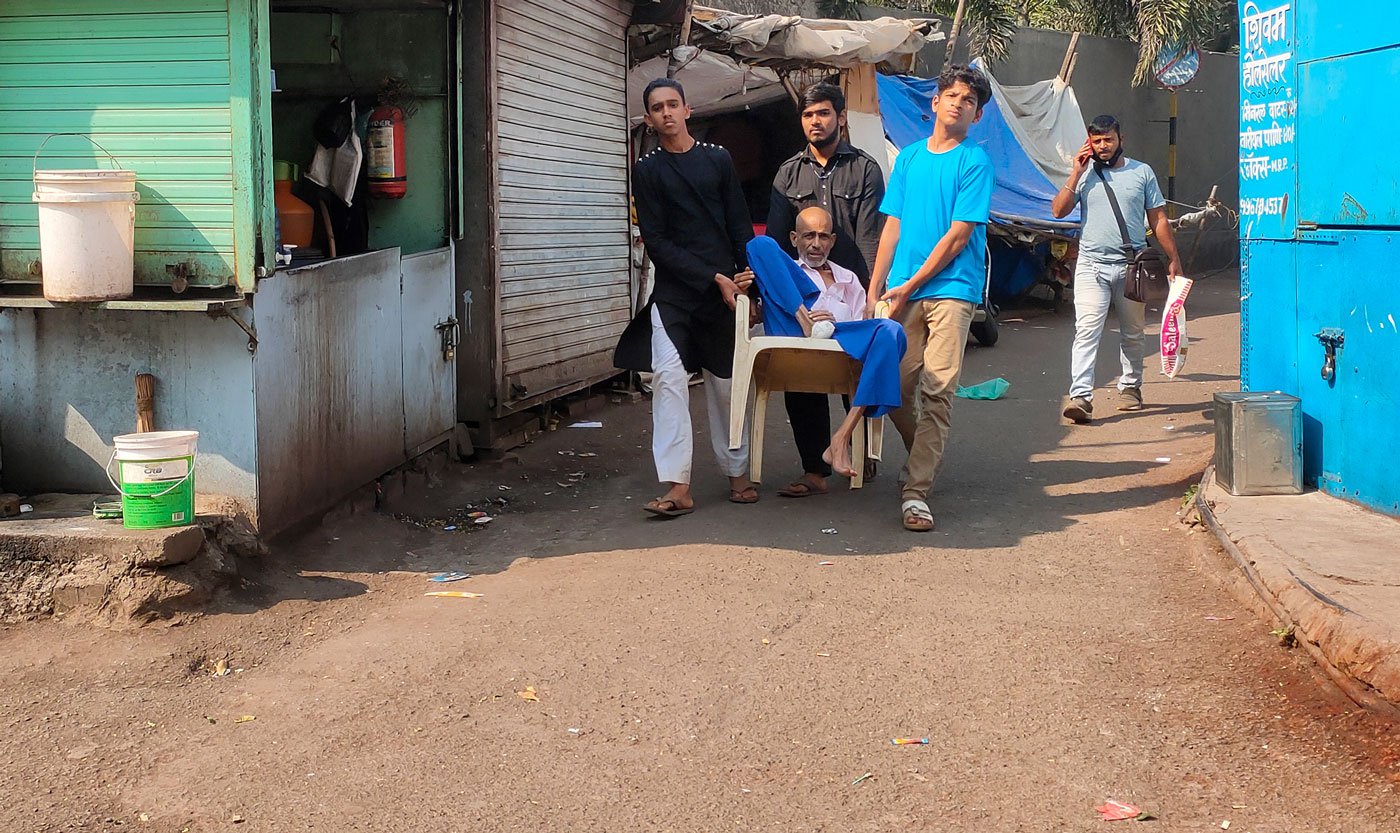
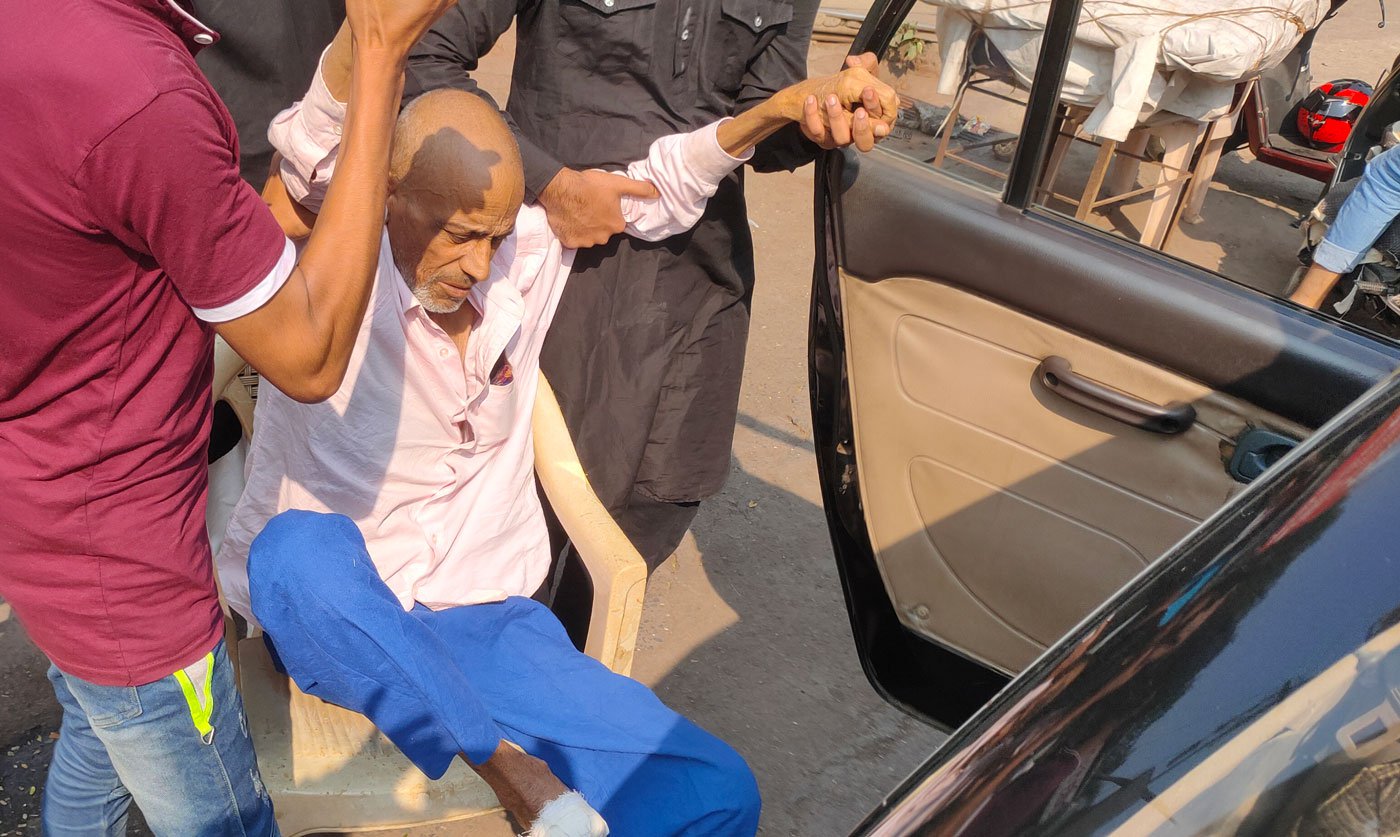
Carrying the chair are his eldest son Abdul Ayaan (left), a neighbour's son and a nephew. The taxi fare to the hospital in Sion more than he can afford, and yet he has had to keep going back there
For four decades, until he lost half his foot and his health began to ebb, Rahman’s world stretched well past that room and lane – to the distant corners of the city in his taxi, and far beyond. When he was around 18, Rahman had learnt driving from other taxi drivers on the city’s streets. In a while, he rented a taxi for a few hours every day “to earn 30-50 rupees.” By the time he was 20, he had found a job as a cleaner and mechanic’s helper with BEST, Mumbai’s public bus service.
Eight years later, around
1992, when his salary was Rs. 1,750, he found a job in Saudi Arabia through an
agent. “It was not so difficult in those days,” he says. “There [in Saudi] I
would earn 2,000-3000 rupees a month, and even 500 [more than my BEST salary]
was enough to run the house for a month.”
Rahman worked there as a bulldozer operator and sometimes drove a rental car. “My sponsor [employer] was a good man,” he says, who provided housing and a steady income. Over time, Rahman also travelled to various countries to help purchase second-hand bulldozers that were then shipped back to Saudi Arabia for his employer's worksites.
In photographs of his travels, many of them curled and fading – which his wife Tajunissa removes from a plastic bag – a barely-smiling Rahman looks content, reclining against a car, sitting on a bulldozer, standing inside a shop, sitting with friends. He is tall and well-built in those images of a time past – while Rahman now, 57 years old, who spends his days on a mattress, is shrunken, frail, and gets breathless while talking.
Sitting or lying down all the time, perhaps his mind wanders down that narrow lane to those now-faraway lands. Life there was comfortable, he says. “My room [in Saudi] had an AC, the car I drove had an AC. For food we’d get rice and akkha murg [whole chicken]. There was no tension, I’d return from work, bathe, eat, sleep. Here, it’s constant loud noise and jhagda [fights] in our neighbourhood, no one sits chup-chaap [quiet]. The fan’s air’s here gives me aches, makes me feel lifeless.”
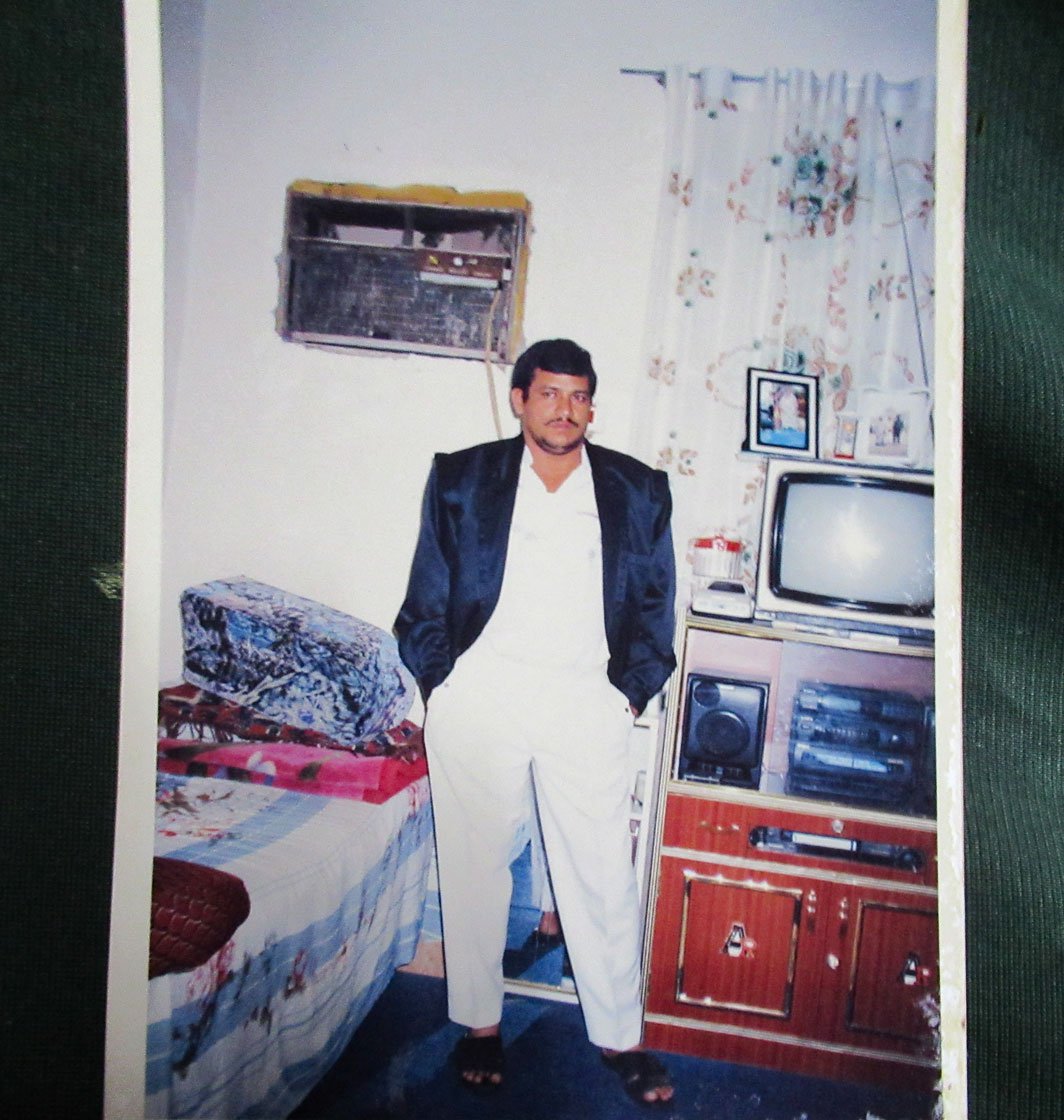
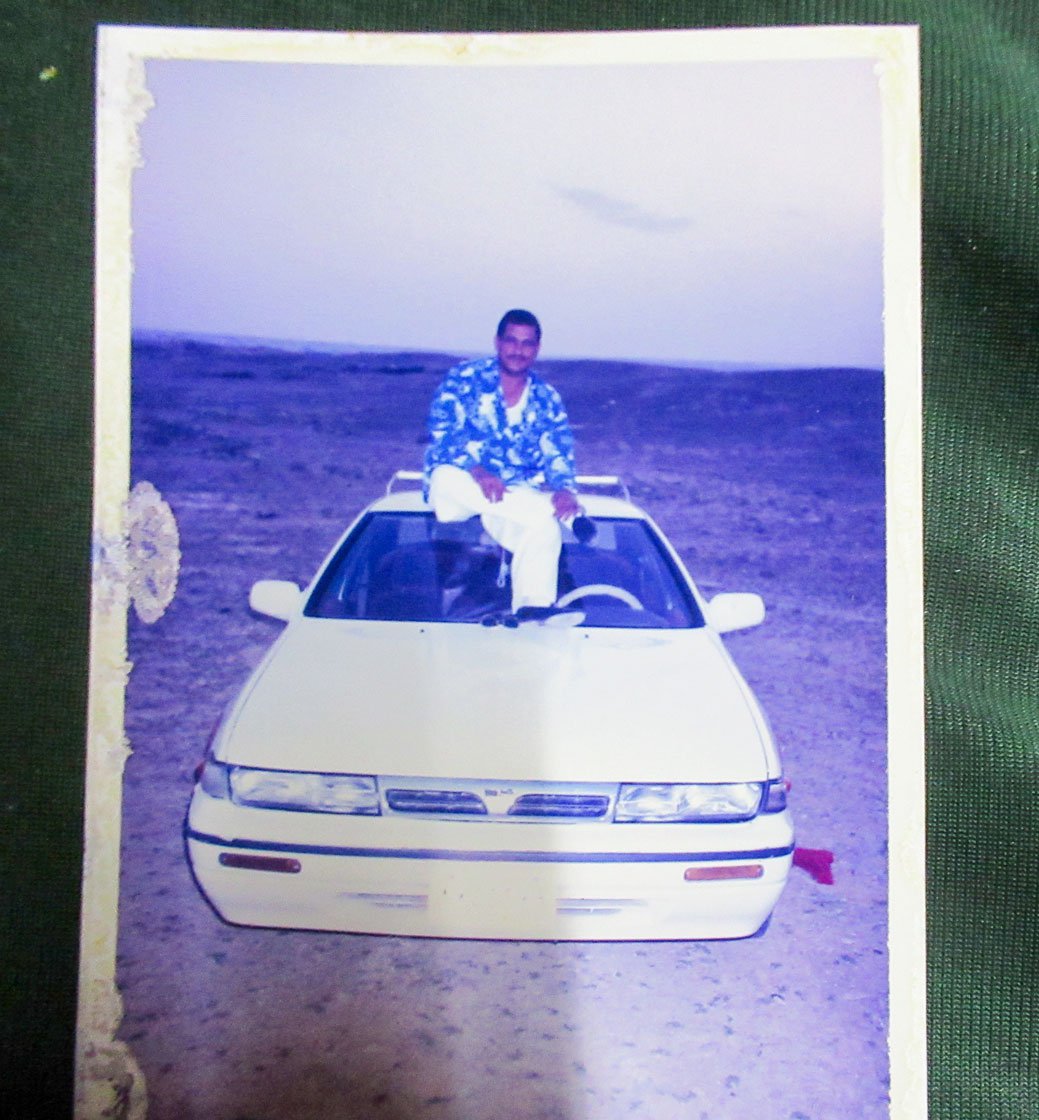
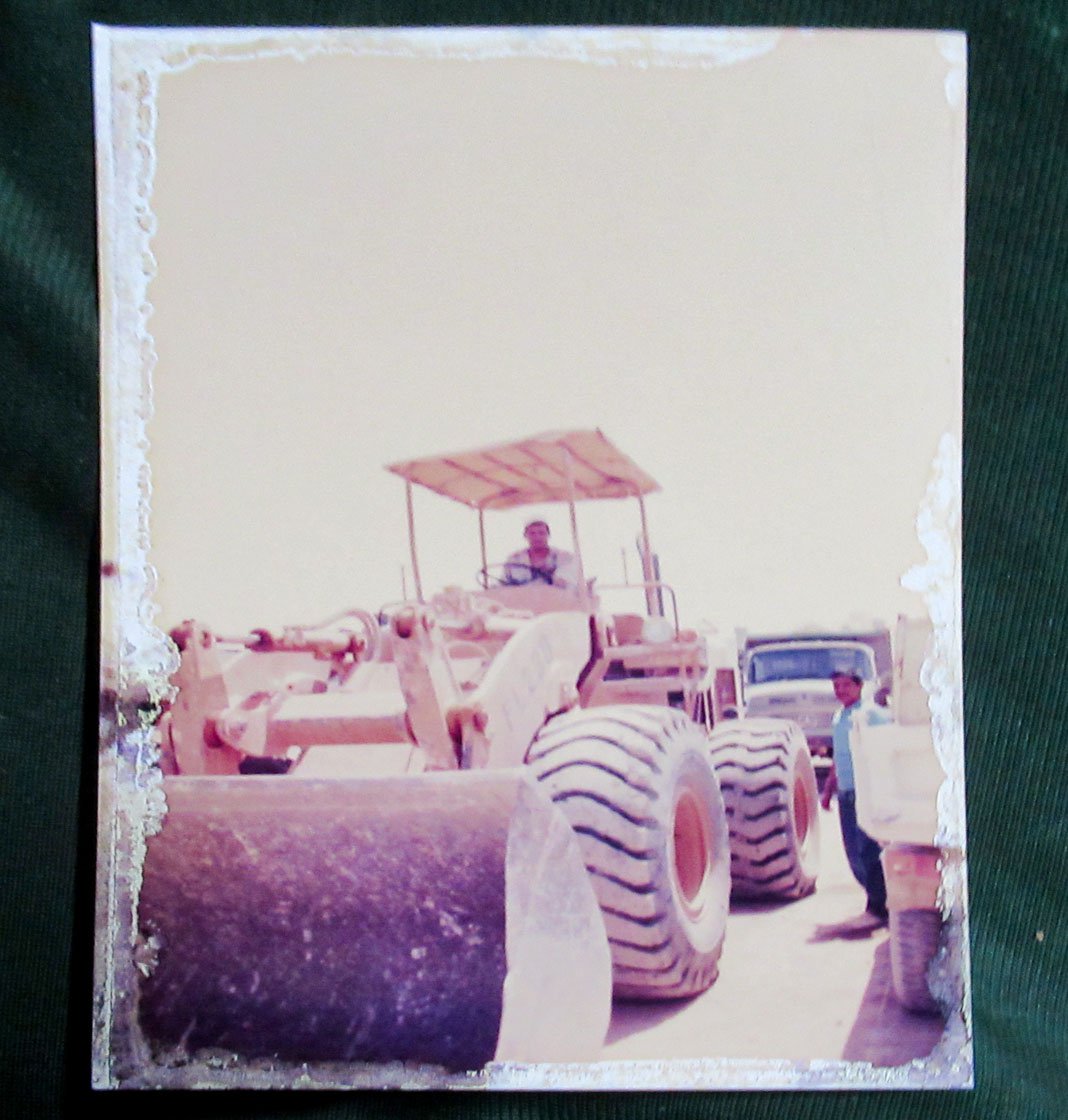
For long, Rahman’s world stretched well past his room; he worked in countries on four continents and in images of a time past, he is tall and well-built
Rahman came back to India in 2013 because, he says, employers in Saudi cannot retain workers from other countries for more than 15 years. When he returned, it was to the same room he lives in now. His mother had bought it in 1985 with some of the Rs. 25,000 provident fund she received when Rahman’s father, a driver with BEST, passed away. (The family had lived in staff quarters until then in Wadala; Rahman studied there till Class 7). He had four younger brothers and four sisters. “When we moved here, it was 10 of us in this room,” he says. (Until December 2021, it was seven – Rahman and Tajunissa, their four children, and his mother, who passed away that month.)
When they moved to Mahim, his mother found a job as a domestic worker (as did his sisters, eventually). Over the years, two brothers, both street vendors, died in separate accidents. Rahman and his two remaining brothers – one of them is an AC mechanic, the other is a wood polisher – live in a three-tier structure in the Mahim slum colony. Rahman in the middle room, the brothers ‘ upar-neche’ , above and below in densely-packed rooms.
His sisters moved away
after they got married. When working abroad, Rahman had visited India once a
year or every two years. At that time, from his salary and savings, he says
with some pride, he helped them (and later his nieces) get married.
When Rahman returned from Saudi Arabia, he had Rs. 8 lakhs saved painstakingly over the years. (His monthly income by then was around Rs. 18,000, most of which he would send home.) A large portion of these savings was used for the family weddings. He also purchased a taxi permit, took a Rs. 3.5 lakh loan from a bank, and bought a Santro. He drove the taxi and at times gave it out on rent, and earned Rs. 500-600 a day. After two years, unable to handle the car’s maintenance costs, and with his failing health, Rahman sold the cab and began driving a rented taxi, earning around Rs. 300 a day.
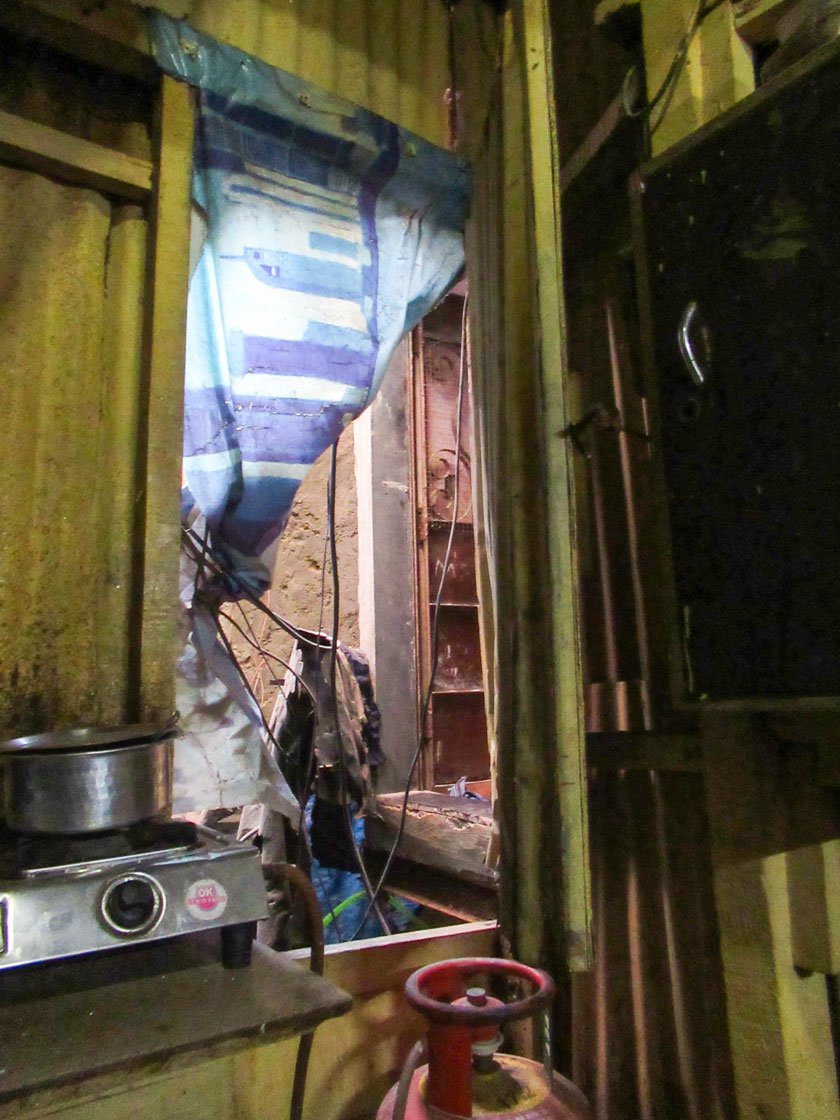
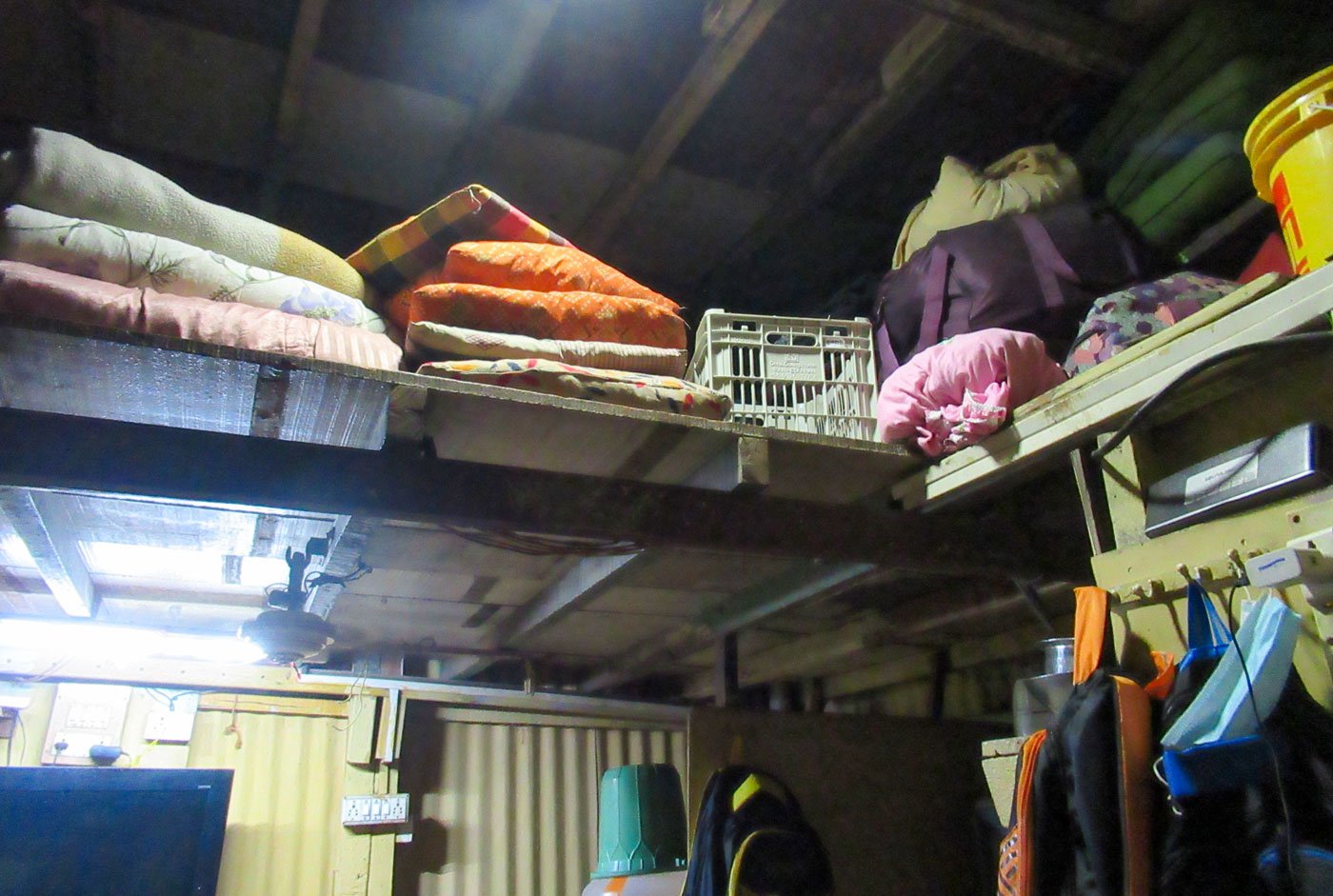
Now he is confined to a 150 square feet airless room, and is fearful of his family losing that room too someday
That was in 2015. “Till the lockdown [in March 2020], I was doing this,” he says. “Then everything stopped.” Though he would still walk across to familiar meeting spots to chat with friends, “I have been mostly at home” since then, he adds. The family managed during the lockdown with rations given by charitable organisations and local dargahs , and a few hundred rupees every now and then from friends and better-off relatives.
The diabetes had been detected when Rahman was in Saudi Arabia, he was on medication, but his health had mostly held out. After his return to India in 2013, he says, it began going downhill. That prevented him from trying again for an overseas job. But it was with the lockdown that his world really shrank. He got bed sores from lying down for long stretches. Those wounds too had to be surgically handled at Sion hospital.
It was soon after this that Rahman noticed the black spot on his right middle toe.
Besides multiple hospital visits, he also consulted a local doctor, who advised an angioplasty to remove the blood circulation blockages. This procedure was eventually done at Sion hospital in October 2021, some weeks after half his foot was cut off. “Circulation improved, the pain receded, the blackness faded,” Rahman says, “though some pain and itching in the leg remained.” A local organisation arranged for an attendant to do the wound’s dressing, so the hospital visits became less frequent.
When Rahman’s foot was healing, he was hopeful (though he also spent a few days in KEM hospital earlier this year for stomach problems aggravated by his immobility). “Once some chamda [skin] grows over my foot, I have heard there are special boots for this,” he had said. “I’ve asked how much that will cost. Then I could start walking again…” Tajunissa said they want to procure a wheelchair (instead of the rickety walker he now tries to use).
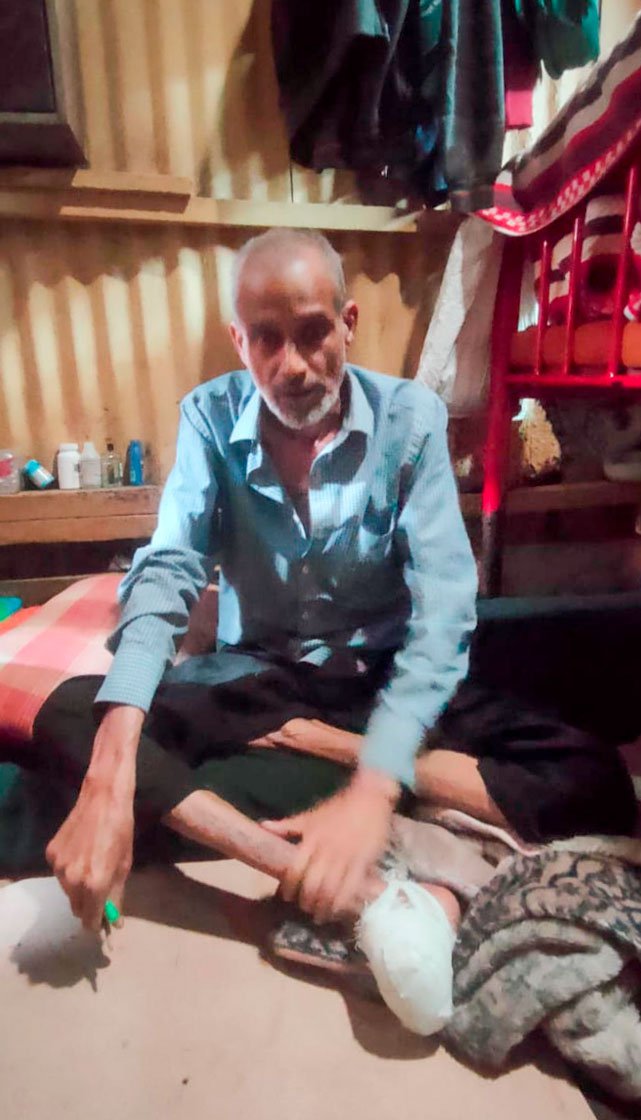
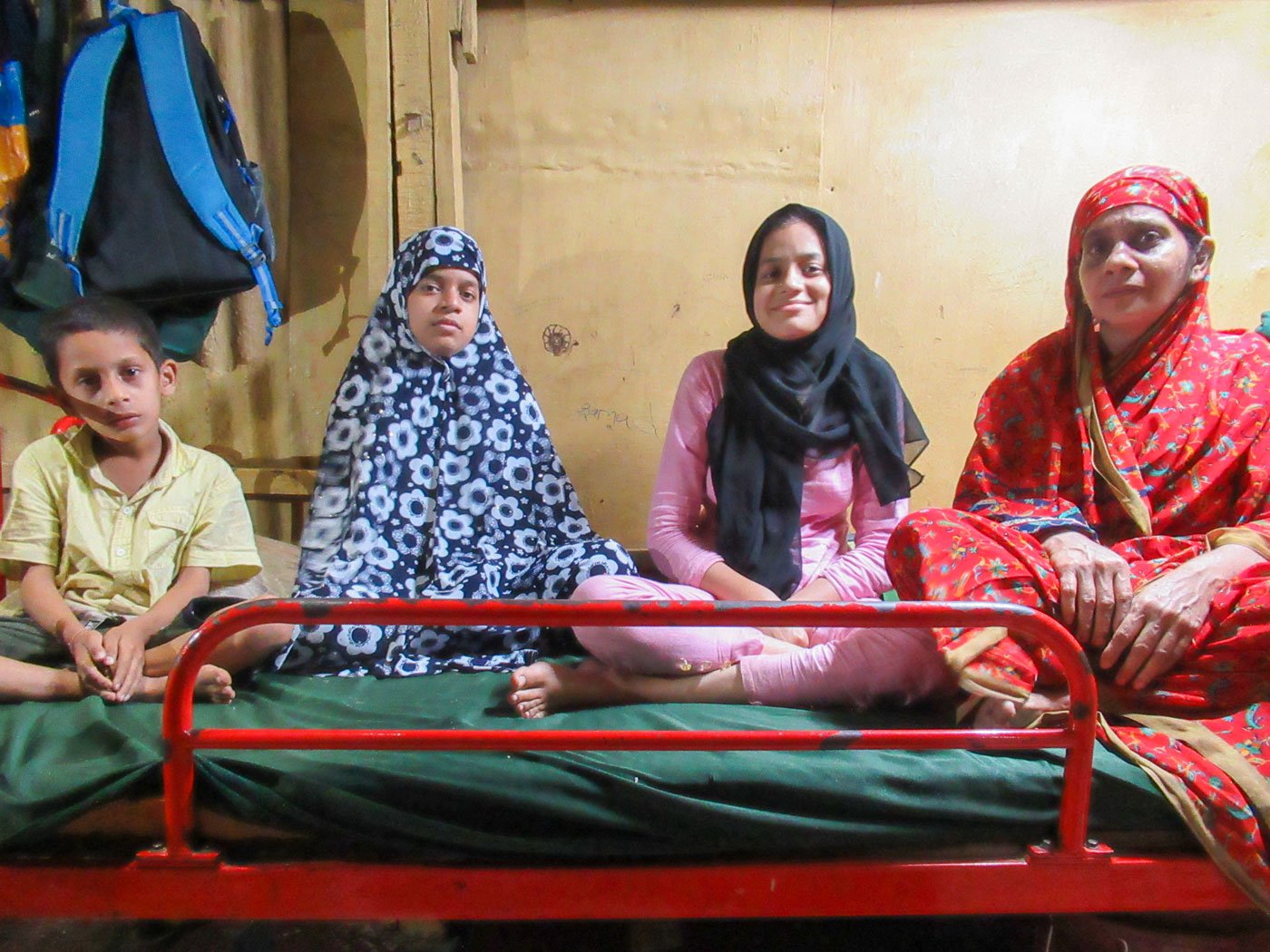
Rahman's debilitation has hit his family hard: Abdul Samad, Afsha, Daniya and his wife Tajunissa (eldest son Abdul Ayaan is not in this photo)
When his foot seemed to be healing, Rahman had also spoken of his joys – of the contentment when occasionally visiting (in the past) Elavanasurkottai, his ancestral village in Tamil Nadu’s Ulundurpet taluk , to meet his elder sister and extended family. And the satisfaction he feels about his siblings’ concern now, when they ask about his health. “That feels good,” he said.
His prolonged debilitation has deeply impacted his family. With no income even beyond the lockdown periods, they have continued to depend on help. Tajunissa, 48, a homemaker until recently, has found a job as a short-time cleaner at a local balwadi for Rs. 300 a month. “I will have to look for domestic work,” she says. “Maybe we will send our older son for tailoring.”
Their eldest son, Abdul Ayaan, is 15. If the boy was older, says Rahman, “we could have tried sending him to Dubai to work.” “Our condition is dire,” adds Tajunissa. “We have accumulated [since the lockdown] a light bill of around 19,000 rupees, but when the man from the electricity department visited and saw our state, he gave us time to pay. The kids’ school fees have not been paid in full, we have asked for time for that too. The [gas] cylinder is getting over. How will our house run, how will we look after our children?”
Their youngest son, eight-year-old Abdul Samad, and younger daughter, 12-year-old Afsha, were unable to attend online classes for nearly two years (all four children are enrolled in nearby schools). “I don’t understand what’s going on in class now,” said Afsha, after schools recently reopened.
The oldest daughter, Daniya, who is 16 and in Class 11, managed to study (as did Ayaan) using their cousin’s and friend’s mobile phones. She says she wants to train as a beautician and is already skilled in applying mehendi , from which she hopes to earn a bit.
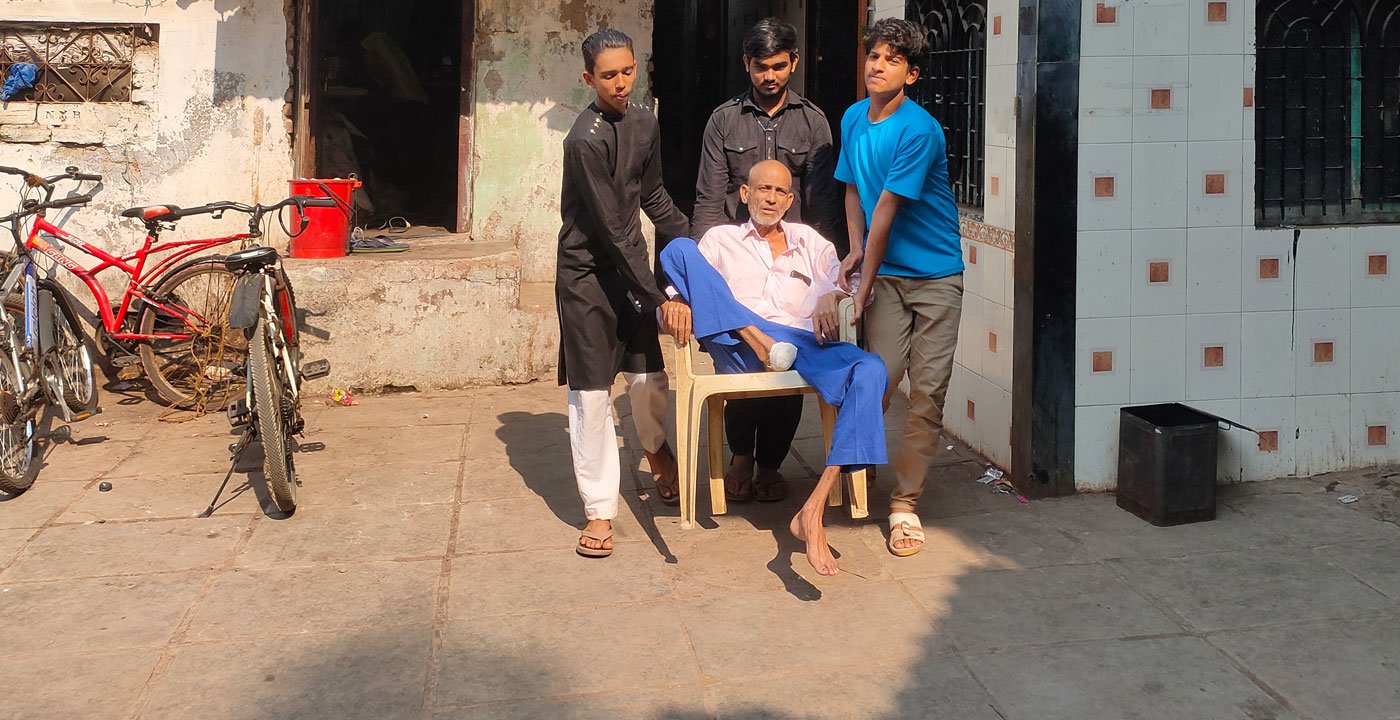
'Now I don't know how long I am alive. My hopes for my children have died'
Rahman has at all times remained acutely worried about his family. “What will happen to them after me? My youngest son is just eight…” Another crushing and constant worry, he says, is whether their slum colony will someday be demolished for a redevelopment project. The entire family will receive one unit/room, he fears, while he and his brothers live in three rooms. “What if my brothers want to sell and move? They might give my family 3-4 lakhs and ask them to leave. Where will my family go?” he asks.
“If instead of my foot this had happened to any other part of the body,” he adds, “even my hand, I could at least have walked, gone somewhere. Now I don't know how long I am alive. My hopes for my children have died, but as long as I am around, I want them to study. I will borrow and ask and manage somehow.”
Around mid-February, on a recurring visit to Sion hospital, the doctor advised that Rahman should be admitted because his sugar levels were dangerously high. He spent a month there and was sent back home on March 12 – the diabetes still uncontrolled, his right leg just bone and skin.
“The remaining skin on the right foot is turning black again, and it is hurting too,” he says. “The doctor thinks they might have to cut off the entire foot.”
On the night of March 14, the pain became unbearable, “to the point of crying” Rahman says, and he had to again be carried at midnight on the chair to a taxi to reach the hospital. More tests have followed, injections and medicines are briefly reducing the pain before it returns. He has to soon return to hospital for another set of scans and tests, and perhaps for another surgery.
He sounds more exhausted and dejected by the day. The family is fervently hoping all this gets sorted out. “Inshallah,” says Rahmanbhai.
Cover photo: Sandeep Mandal
With
thanks to Laxmi Kamble for her generous help and time while working on this
story.
